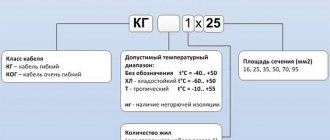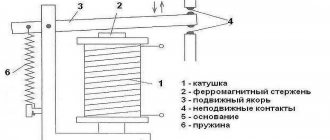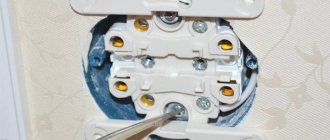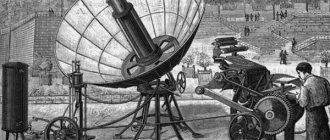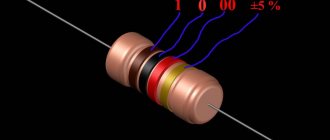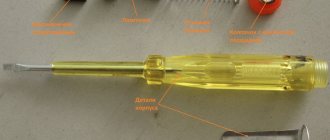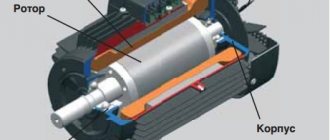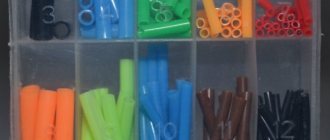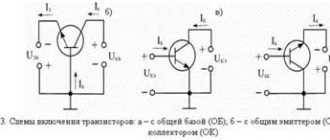Since the appearance of the first fire extinguishers (19th century), their design and composition have undergone significant changes, resulting in the appearance of almost universal models. Modern equipment is capable of coping with fires of various classes and stages, and therefore has become a mandatory standard for equipping enterprises and public institutions.
Externally, the elements of the fire extinguisher look approximately the same. Only the principle of operation is different, which makes significant adjustments to the operating procedure.
Fire extinguishers - features and purpose
The purpose of the device is to extinguish fire. With the advent of fire safety standards and regulations, devices began to perform an additional function - prevention of violations (preventive).
The wide variety of fire-fighting devices determines some features of their use. Foam fire extinguishers are designed for small-area fires (class A), powder extinguishers are the most practical and are used to extinguish liquid substances and electrical installations (B, C, E), carbon dioxide are limited in action, but cope with explosive fires when burning gases and liquids, metals and oils.
Reference. Certified manufacturers complete fire extinguishers in accordance with safety rules and regulations. The product body indicates the type of fire extinguishing agent (according to fire classification), mechanism of action (instructions), service life (date of manufacture of the cylinder and injection of powder, gas, foam).
Classification
There are several classifications of main fire extinguishers:
- By volume of substance (up to 5 liters, 5-10, over 10 liters).
- According to the type of composition;
- By type of trigger mechanism (pistol, valve, constant pressure source).
- According to the method of supplying the composition (the substance is supplied under its own pressure or as a result of the pressure of gases formed during the chemical reaction of the components).
- By type of operation (meaning how the device is activated: with the help of a person or automatically).
Based on their composition, there are three main groups of fire extinguishers, each of which is designed for different causes of fire.
- Powder.
- Gas.
- Water-fueled.
Many of you will ask, how can you quickly navigate during a fire and understand whether a given fire extinguisher is suitable or not? After all, in a state of panic, previously studied material is rarely remembered. It's simple. Each cylinder has a label indicating the type and purpose in large letters.
Remember the following procedure for using fire extinguishers.
- Class “A” extinguishes solid flammable materials: coal, wood, paper.
- Class “B” can handle flammable liquids: gasoline, fuel.
- The letter “C” indicates the ability to extinguish gases.
- If the device is intended to localize a fire during the burning of electrical installations, then it must have the letter “E” on it.
How they work - diagram
The general diagram of the fire extinguisher is shown in the figure (page 71 Appendix). The body is made of a cylinder, inside of which operating pressure is created. Due to it (when you press the lever), the fire extinguishing agent is released out under pressure. A flexible hose with a socket (funnel) helps direct the composition to the hearth. Let's look at the diagram of each type of fire extinguisher separately.
Carbon dioxide
These units are the simplest to fill. The pressure in a carbon dioxide fire extinguisher plays an important role and affects its serviceability. Liquefied carbon dioxide under pressure (5.7 MPa) is pumped into a durable steel cylinder, the wall thickness of which is 3.5–4 mm. The internal structure of fire extinguishers consists only of a siphon tube through which carbon dioxide escapes.
Carbon dioxide fire extinguishers
Contents - what does it consist of?
The diagram of the device is clearly shown in the photo (page 71 Appendix). Let's decipher it.
Standard carbon dioxide fire extinguisher device:
- Steel cylinder.
- ZPU (press type).
- Siphon tube.
- Trumpet.
- Handle (for carrying).
- Check.
- CO2 charge.
In order to activate the mechanism, open the valve (press the lever). In the first case, the valve comes off, in the second, the nipple comes off. The rod pierces the cylinder, the resulting pressure pushes the gas out.
Fire extinguishing agent
Carbon dioxide is used in rooms with computers and equipment, in buildings where monuments of culture, art, history are stored (museums, libraries, storage facilities), where there is a risk of damage to something unique and inimitable. The gas works cleanly and leaves no traces behind.
On a note. Carbon dioxide is ineffective in extinguishing substances that burn without oxygen (alkali metals, Al, Mg), as well as in processes such as smoldering (wood, rags).
Operating principle
According to experts, non-flammable gas, when released indoors, forms a cloud of inert aerosol. The volume of liquefied carbon dioxide increases in the aerosol state by 400–500 times. The gas instantly loses pressure and turns into snow-like fog with temperatures down to –72 ºС.
The action of the op-amp is based on two principles: an anti-oxygen cushion is created that prevents open combustion, simultaneously with a decrease in temperature as a ignition factor.
Powder
The most reliable for production. That is why enterprises set standards for equipping this type of device. The fire extinguishing composition copes with fires in electrical installations (indoor), flammable gases and liquids (classes A, B, C, E). The pressure under which the cylinder is contained is 12–16 MPa, while the wall thickness of fire extinguishers is 1–1.5 mm.
Powder in a fire extinguisher
Contents - what does it consist of?
According to the type of ZPU, the devices are manual and self-actuating, when extinguishing occurs automatically at a temperature of 100 ºС. The components of the package are clearly presented on the layout (page 74 Appendix).
The main elements of the design of powder fire extinguishers (OP):
- Steel body.
- Powder charge (volume from 1 to 100 liters).
- Siphon tube.
- Gas expulsion.
- Pressure gauge.
- Handles are portable.
- Head with start lever.
- Flexible hose with socket.
In order to put the OP into action, the start handle is pressed on the OP, the valve opens, with the help of which the composition is released. In injection models, the cylinder pierces the rod, in gas generator (ampoule) models - a percussion mechanism with an awl, free-fill models are not under pressure, they are used like fire sand.
Fire extinguishing agent
The powder is represented by chemical compounds of phosphorus and potassium salts, as well as additives that reduce humidity levels. The shelf life of the mixture depends on them, since hydrophobic talc and silicon dioxide prevent the caking of granules. The finer the powder, the higher the fire extinguishing ability.
The substance in action greatly reduces visibility at the source of the fire, white dust gradually settles in a dense layer on surfaces, so extinguishing is carried out repeatedly and with the use of respiratory and eye protection.
Operating principle
The powder mixture under gas pressure in a cylinder (ampoule) is converted into a foam-like composition, which with a dense crust separates the flammable substance from access to oxygen. At the same time, the decrease in the temperature of the source is insignificant.
The OP is designed for several applications. The required supply volume is regulated by a muffler - a handle or a pistol, which makes it possible to extinguish the flame in stages with gradual cooling of the burning surfaces.
On a note. Water-based fire extinguishers also consist of chemical solutions, but they are water-based. The pressure in the cylinder is kept at 25 MPa. The gas pushes the contents out of the container under strong pressure. Due to the low concentration of surfactants (1%), the use of chemical agents is limited in production.
Air foam
The conditions for using this type of device are varied. They extinguish substances in solid, liquid and gaseous states, as well as materials with characteristic smoldering, with the exception of objects under voltage above 1000 V (foam-emulsion).
Air foam fire extinguishers
In case of fires in the absence of oxygen, foam units are ineffective. The cross-sectional thickness of the cylinder walls reaches 1.5–2 mm, the charge volume is 4–400 liters. The foaming agent (composition) depends on the fire category.
The equipment is environmentally friendly, low in consumption and can be used without PPE. A significant disadvantage is the limited use due to the freezing of the foaming agent at temperatures below zero.
Contents - what does it consist of?
By type, fire extinguishers are available with high and low pressure, which affects the frequency of foam supply. The device is clearly presented in the diagram (page 76 Appendix).
Main parts of air-foam fire extinguishers (AFP):
- Balloon.
- Siphon tube.
- Working pressure generator.
- Lever.
- Head with button.
- Long hose gun with automatic control device.
- Nozzle and additional spare parts for foam formation.
- Pressure indicator.
To activate the ORP, press the head button, the composition comes out of the tube, heading into the foam-generating part of the barrel. Using the ZPU, the supply of foam concentrate is restored if necessary.
Fire extinguishing agent
The fire extinguishing composition is made from chemicals that are diluted with water. Each foaming agent (PO-1, PO-4, etc.) is used strictly for the intended purpose specified by the manufacturer.
Operating principle
The mechanism of the unit consists in displacing the foaming agent with gas through the operation of the air compressor. When interacting with air (nitrogen), the composition forms a large amount of foamy substance (emulsion), which prevents the resumption of combustion. Thus, the mixture acts as an insulating and cooling agent.
Foam
In addition to air models, foam fire extinguishers are chemical (OCP) and emulsion (EVE). The former operate using the energy of the reagents, i.e. the foam is ejected without gas pressure. Air-emulsion ones are activated by the action of gas from the cylinder. Such devices are characterized by high fire extinguishing efficiency on par with halon fire extinguishers (CH), and their cost is much lower.
Contents - what does it consist of?
Details of what an OHP and OVE fire extinguisher consists of:
- Balloon.
- Charge (alkaline/foam capsules).
- Flask with acid/expellant gas in cylinder.
- Siphon tube.
- Hose 4–16 m long.
- Nozzle.
- ZPU.
- Pens.
In order to bring the unit into working condition, turn the valve handle to the control valve or press the stem with a lever (pierces the membrane). As a result, a reaction occurs - chemical (CCP) or physical (PHE).
Fire extinguishing agent
The composition of the foaming agent is standard: water, PVA (fluorine, hydrocarbon) and additional substances that increase the adhesion of the emulsion or prevent freezing at low temperatures. The advantages of the composition are considered to be high penetrating ability and the ability to envelop without leaking.
Important. The substance is used for class A, B, E fires, since the Ministry of Emergency Situations Regulations prohibit extinguishing energized installations (over 1000 V) and flammable gases with foam fire extinguishers.
Operating principle
It consists of displacing oxygen and simultaneously cooling surfaces. OCP forms a foamy crust, while OVE forms an emulsion film.
What are OP fire extinguishers used for?
Characteristics of application areas:
- in public places with large crowds of people: schools, hospitals, cafes, offices. The use of the powder is not dangerous for others, the need for evacuation is reduced;
- used at gas stations, enterprises working with fuel and fuels and lubricants. The powder fire extinguisher can extinguish solid and liquid materials at the same time;
- the surface being treated is damaged, so it is less often used in archives, libraries, and locations with expensive equipment;
- motor transport (by law you must carry it in a car);
- for extinguishing electrical wiring, cables, live elements.
What classes of fires can be extinguished by OP
Powder-filled fire extinguishing agents are the most versatile among fire extinguishers. Their quality sometimes causes mistrust, especially among motorists, but this applies to individual models. New modern products from reliable manufacturers are very effective.
Powder fire extinguishing agents are designed to extinguish a wide range of fires:
| Class | Substances |
| A | Solid. |
| B | Liquids not soluble in water (fuel, oils). |
| WITH | Gases (propane, ammonia, hydrogen, household mixtures). |
| E | Structures under tension. |
| D | Metals. |
Powders are regulated by GOST R 53280-2009:
- general purpose GOST R 53280.4-2009:
- ABCE – Piranit-A, Vexon-ABC, P2-AP and PSB-3M. With phosphorus-ammonium salts;
BCDE - for liquid and gaseous media;
- special GOST R 53280.5-2009:
- BC – for gases;
BCE – extinguish smoldering materials;
- D – extinguish metals: Vexon-D, PHC. With potassium chloride, graphite. PS group powders extinguish potassium, sodium, lithium, magnesium.
Some compositions are intended for extinguishing fires with significant differences, for example, PHC is suitable for A and D.
Types of fire with letter designations and OTV are stamped on the body and are specified in the technical documentation of the product.
What can be stewed OP
Fire extinguishers with powdered extinguishing agent are used for fire extinguishing:
- solid materials: wood, paper, textile, coal;
- flammable liquids, solid melting substances: fuel, solvents, oils, plastics, synthetics;
- gas;
- electrical installations up to 1000 V;
- stew with a special mixture:
- electrical equipment up to 5,000 V;
metals, metal-containing, including alkali, hydrides, with silicon compounds;
- solid materials and metals that smolder with the consumption of oxygen.
Each class has its own fire extinguishing mixture or there are general/universal compositions that combine several categories.
What can't be put out OP
The composition of the powder fire extinguisher is more sensitive to types of fire. There are many modifications of the mixture.
Example: if the letter A is missing from the designation, then the fire extinguishing agent, for example, brand BCE, does not extinguish fires of solid materials poorly or at all. Fires with special properties require appropriate marking.
OPs are used for all types of fires, except F (radioactive substances), but there are nuances. It is prohibited to extinguish materials that are smoldering or burning without oxygen. It is believed that fire extinguishers are not intended for type D. This is not true: with a special fire extinguisher, a powder fire extinguisher suppresses a fire of this category. Similarly for equipment up to 5000 V.
conclusions
The principle of operation of a fire extinguisher. In Russia, fire extinguishers of all types and types are used - the law establishes equipment standards depending on the classes of fires. The principle of their operation is practically the same. Some create a barrier to the penetration of oxygen, others further reduce the temperature at the source of the fire. Distinctive features lie in the design of the equipment, and therefore the principle of its launch. There are several types and types of fire extinguishing agent supply devices.
There are special types of aerosol modules designed for use in transport; they are popular among car enthusiasts, such as MAG fire extinguishers.
Without understanding the reactions occurring inside the housing, the use of fire extinguishers becomes dangerous to life and health.
Designs of hand-held portable fire extinguishers
The idea of using hand-held portable fire extinguishing equipment to effectively fight fires is based on the model of using a special tank filled with a substance suitable for only one purpose - extinguishing a fire. The body of the fire extinguisher acts as such a reservoir. All fire extinguishers that use a mixture prepared and pumped inside to extinguish a fire are characterized by the following design:
- Body - reservoir;
- Locking device;
- Control - starting device;
- Optional equipment;
- Brackets, handles for carrying and storage.
As you can see, everything ingenious is simple. The housing acts as a reservoir for storing the working substance. The locking device is used to pump fire extinguishing agent into the tank and create the necessary pressure inside the housing.
The control is equipped with a safety device and a dosing device. The safety device ensures the safety of the fire extinguisher from accidental activation. Typically, fuses in fire extinguishers are made in the form of metal fuses, the removal of which allows the metering valve to be brought into operating position. And the dosing device allows you to effectively use the substance in real fire conditions.
Additional equipment means the installation of sockets, tubes or hoses so that the stream of substance is directed exactly to the place where the fire occurred. Brackets and handles are necessary for carrying and installing the fire extinguisher in the storage area.
Structure and basics of work
The structure of a powder fire extinguisher and the principle of its operation are shown in the diagram below.
- The housing in which the fire extinguishing powder is placed.
- A head having a striker.
- Gas source.
- Siphon tube.
- Start handle.
- Flexible sleeve.
- Spray gun.
- Powder
To activate the device, you should follow this algorithm:
- Break the check with the seal.
- Pull back the trigger handle while pressing the gun handle.
These actions take a matter of seconds.
In the cylinder itself, when the start handle is pulled away, the gas source is activated.
It mixes with the powder and creates strong pressure in the housing.
It pushes out the created mixture to extinguish the flame.
In general, the principle of operation of a powder fire extinguisher is as follows: the functional gas ends up in the housing.
When the shut-off technology reacts, the powder follows a siphon tube into the hose and to the nozzle.
It is supplied in doses or in a single volume. And once on the source of ignition, the powder blocks the fire from the air.
This is its main function.
For this reason, powder apparatus cannot extinguish fires without the presence of oxygen.
There are also automatic models. And when the temperature in the room reaches critical parameters, they activate independently.
Fire extinguisher maintenance
In accordance with clause 478 of the Fire Regulations in the Russian Federation (approved by Decree of the Government of the Russian Federation of April 25, 2012 N 390), the head of the organization is obliged to ensure the serviceability of fire extinguishers, the frequency of their inspection and testing, as well as timely recharging of fire extinguishers.
Maintenance of fire extinguishers is regulated by SP 9.13130.2009 “Fire fighting equipment. Fire extinguishers. Requirements for operation."
Fire extinguishers put into operation must undergo maintenance, which ensures that the fire extinguishers are constantly ready for use and the reliable operation of all components of the fire extinguisher throughout its entire service life.
Fire extinguisher maintenance includes:
- periodic inspections;
- examinations;
- repair;
- tests;
- recharge.
To carry out maintenance of fire extinguishers, the head of the organization must appoint, by order of the organization, a person responsible for this process.
Maintenance is carried out in accordance with the manufacturer's operating instructions, which are included with the fire extinguisher.
A fire extinguisher put into operation must be charged, sealed, and have a tag indicating the date of charging, the date of the next recharge and technical examination.
During the initial check of the condition of the fire extinguisher, you must:
a) carry out an external inspection of the fire extinguisher, during which pay attention to:
- absence of dents, chips, deep scratches on the body, control units, nuts and head of the fire extinguisher;
- condition of protective and paint coatings;
- availability of clear and understandable instructions;
- condition of the safety device;
- the serviceability of the pressure gauge or pressure indicator (if it is provided for in the design of the fire extinguisher), the presence of the necessary mark and the amount of pressure in the pump-type fire extinguisher or in the gas cylinder;
- the mass of the fire extinguisher, as well as the mass of the fire extinguishing agent in the fire extinguisher (the latter is determined by calculation);
- the condition of the flexible hose (if any) and the fire extinguishing agent sprayer (for the absence of mechanical damage, traces of corrosion, casting flash or other objects that impede the free exit of the fire extinguisher from the fire extinguisher);
- the condition of the chassis and the reliability of fastening the fire extinguisher body on the cart (for a mobile fire extinguisher), on the wall or in the fire cabinet (for a portable fire extinguisher).
b) check the complete set of the fire extinguisher;
c) check the condition of the fire extinguisher installation site:
- visibility of the fire extinguisher;
- visibility of the fire extinguisher installation location indicator;
- possibility of free access to the fire extinguisher.
During the quarterly inspection of the condition of the fire extinguisher, you must:
- check the installation location of the fire extinguisher;
- check the condition of the approaches to the fire extinguisher;
- Carry out an external inspection of the fire extinguisher.
During the annual inspection of the condition of the fire extinguisher, you must:
- check the installation location of the fire extinguisher;
- check the condition of the approaches to the fire extinguisher;
- carry out an external inspection of the fire extinguisher;
- monitoring the amount of leakage of expelling gas from a gas cylinder or fire extinguishing agent from gas fire extinguishers;
- fire extinguishers are opened (full or selective), the condition of the filters is assessed, the fire extinguisher parameters are checked and, if they do not meet the requirements of the relevant regulatory documents, the fire extinguishers are recharged.
At least once every 5 years, each fire extinguisher and propellant gas cylinder must be discharged, the fire extinguisher body must be completely cleaned of fire extinguisher residues, external and internal inspections must be carried out, and the strength and tightness of the fire extinguisher body, trigger head, hose and shut-off device must be tested. .
If mechanical damage to the cylinder or traces of corrosion on its body is detected, the fire extinguisher must be subjected to a strength test ahead of schedule.
All fire extinguishers must be recharged in the following cases:
- immediately after use;
- if the amount of gas leakage or expelling gas per year exceeds the permissible value.
TIMELINES FOR CHECKING FIRE EXTINGUISHER PARAMETERS AND RECHARGING FIRE EXTINGUISHERS
All work on checking, surveying, and recharging fire extinguishers is carried out only by a specialized organization.
Information about the recharge of the fire extinguisher is entered on the body of the fire extinguisher (using a label or tag attached to the fire extinguisher), as well as in its operational passport.
Carbon dioxide devices
When class B, C, E fires involving oxygen occur, powder versions are powerless. And carbon dioxide devices come into operation. They can only be used to extinguish Class A fires if there is no internal smoldering of materials.
The principle of operation of a powder carbon dioxide fire extinguisher is based on the rapid expansion of the gas concentrated in it. As a result, cold is released in a certain amount. Therefore, the sockets for the exit of the fire extinguishing element (which here is liquid carbon dioxide) are always plastic or metal. In the first case, a special heat-resistant material is used.
When working with a cylinder, you should not touch the sockets, because their temperature can reach -70 degrees.
Such cylinders are often used in offices, since during the extinguishing process they do not contaminate computers and other office equipment.
The potential defense area is in the range of 10-550 square meters. m.
A carbon dioxide cylinder is most effective at the initial stages of fire spread and in those areas where, due to various circumstances, water cannot be used.
How to use a fire extinguisher?
Depending on the type of unit, the type of device that puts it into working condition, each model may have its own nuances and features. Therefore, before using the device, you should read the instructions supplied with it. Some manufacturers put a diagram on the device body, following which anyone, even an untrained person, can quickly deal with a fire, especially at the initial stage of a fire.
However, there are a number of rules that apply to all types of fire extinguishers. Before activating the device, it should be brought as close to the fire as possible. You need to approach the fire from the leeward side, taking into account that the length of the fire extinguishing agent jet does not exceed 3 meters. This way the consumer will protect himself from harmful substances released as a result of combustion and from the temperature effects of the fire.
Then you need to:
- break the seal located on the starting device;
- bring the fire extinguisher into working condition by pulling the pin;
- turn the socket and hose nozzle towards the fire;
- turn the valve or press the lever;
- the working substance will begin to erupt from the outlet in a powerful stream, which should be directed to the base of the fire, and not to the fire itself; if this is impossible, for example, the source of ignition is located in a niche, then the stream is directed from top to bottom;
- After localizing the fire and extinguishing the fire, you need to carefully inspect the fire site in order to identify smoldering or minor flames, which should also be treated with a fire extinguishing agent.
If everything is done correctly, then no more than 3-5 seconds will pass between the start of activation of the device and the appearance of the jet. If there are additional people and additional fire extinguishers, they should be used simultaneously. After using the device, it should be recharged. To do this, you should contact the nearest service agency that has a license or certificate.
Now let's look at each type of fire extinguisher in more detail.
Powder types of fire extinguishers
The working substance of a powder fire extinguisher is powder pumped into the tank and having a fine dust structure. The powder is based on natural and artificial materials that have a neutral chemical status. The powder not only does not burn, it is also able to withstand high temperature loads, and the ability of the powder to get literally into all the cracks when applying a jet gives excellent prospects for extinguishing fires.
Powder fire extinguishers are used:
- For extinguishing fires in electrical installations;
- For extinguishing chemical fires;
- For extinguishing petroleum products fires.
Powder fire extinguishers today are the most common primary fire extinguishing agents. They can be rated from 450 grams as a car fire extinguisher and up to 10 kg as a professional product.
Design of self-actuating devices
A self-activating fire extinguisher is made in the form of a glass vessel with fastenings for fixing on the walls or ceiling above the site of suspected fires. In terms of internal design, a self-triggering fire extinguisher is designed in the same way as its portable counterpart.
Information about self-activating fire extinguishers (click to enlarge)
As soon as the combustion temperature in the room reaches a certain point, the gas inside the vessel begins to expand, and the vessel itself explodes. As a result of a pulsed release, the contents cover burning substances, materials or electrical equipment, cutting off the flow of oxygen to the source of fire.
Video - self-activating fire extinguisher in action
This is interesting: Recharging fire extinguishers: timing, frequency, checking
Types of self-activating fire extinguishers
- The standard type of device is a self-activating powder fire extinguisher. The fundamental difference from the models is the temperature that initiates the explosion of the glass flask. For OSB-1 it is 100 degrees, and for OSB-2 it is 200 degrees. They are installed in those production areas where there is a constant absence of personnel: fuel storage areas, pumping stations, electrical switchboards. The placement height from the floor for OSB-1 is from 0.5 to 1.5 m, and for OSB-2 it is from 2 to 3 m, and depends on the design features of the protected premises.
Fire extinguisher osp-1
The advantage of OSB-1 and OSB-2 is their cost and ease of installation and maintenance. After operation, all elements of these models can be easily replaced, which significantly reduces the organization’s costs for purchasing new equipment. You can also place such a fire extinguisher yourself due to the small dimensions of the device. Monitoring of serviceability is not required here; the system operates autonomously.
The only drawback of OSB is the high probability of operation in the absence of a real fire. This situation occurs when there is insufficient air conditioning of the room with heating devices, or when fire extinguishers are placed next to heating equipment, or when direct sunlight hits the vessel.
- The self-activating fire extinguisher "Buran" is designed to extinguish burning solid, liquid and gaseous materials and substances, as well as to protect burning electrical equipment. It is used as one of the elements of a complex automatic fire extinguishing system. There are three main types of “Buran” - 2.5-2C; 8.0N and 8.0U. The differences between them are in the volume of the protected area (18, 64 and 60, respectively), the diameter of the flask (250, 350 and 262, respectively), as well as in weight (2.9, 12 and 9.5, respectively). The service life is 10 years.
Fire extinguisher Buran-8
The design and operation process are similar to OSB. The fundamental difference from other models of self-triggering fire extinguishers is the presence of a starting unit from a heat-conducting cord. They have a start function and are connected to automatic fire extinguishing systems.
- The self-activating fire extinguisher “Doping” is a type of aerosol fire extinguisher and is intended for use in cars. During its development, it was taken into account that the engine compartment is not airtight, there is vibration and increased temperature during engine operation for a long time.
In the photo: Fire extinguishing aerosol generator “Doping-2,160p”
After “Doping” is triggered, the aerosol is evenly distributed over the entire protected space under the hood of the car or above the gasoline tank. In some cases, such a self-activating fire extinguisher is used to prevent theft of a car: starting the engine with something other than the ignition key will provoke an explosion of the aerosol flask, creating smoke that obscures the view, preventing the criminal from escaping, drawing the attention of strangers to the simulated fire. A button to start the fire extinguisher is displayed on the dashboard, which allows the driver to eliminate the source of the flame before the conditions for triggering the “Doping” are created (for example, a temperature of 200 degrees).
- The self-activating fire extinguisher “Bonpet” is designed for the volume of the protected object up to 8 cubic meters. The mass of the ampoule with the fire extinguishing agent is 1.03 kg. An ampoule with an emulsion can be used both as a self-triggering and as a manual fire extinguisher. At a temperature of 90 degrees, the flask ruptures and the emulsion is released onto the flame. If a fire is detected before the temperature in the room reaches a critical temperature, you can throw “Bonpet” at the site of the fire. After breaking the flask, the emulsion turns into a film, which disappears after 24 hours.
Bonpet self-activating fire extinguishers
- pyrotechnic self-triggering powder fire extinguisher “Cherry” can be installed on any surface. It is used in road, rail and sea transport. Can also be used as a hand-held fire extinguisher.
The use of “Cherry” when storing goods on high racks allows you to begin extinguishing fires long before personnel detect the fire. The device is designed to protect 30 sq.m. Powder was used as a fire extinguishing agent.
Video - a story about some types of self-activating fire extinguishers:
Did you find apk for android? You can find new Free Android Games and apps.
This is interesting: Air foam fire extinguisher OVP-10: performance characteristics and purpose
Foam types of fire extinguishers
The use of foam to fight fires has its own specifics. The working substance of fire extinguishers is two components, when mixed, an abundant foam is formed that can last from 10 to 60 minutes. This composition cannot be used to extinguish electrical wiring, but for oil, gasoline and other petroleum-based flammable substances it can be used with high efficiency. True, today this type is quite rare, it has a specific purpose, and therefore is used as a universal remedy quite rarely.
Air emulsion fire extinguishers
OVE - air-emulsion fire extinguishers have a wide range of applications. They can be used to extinguish fires of almost all classes A, B, C, E. At the same time, they are safe for people and the environment and do not create visual interference. That is why such devices are optimal for ensuring fire safety in crowded places: in kindergartens and schools, medical institutions and hotels, theaters and cinemas.
Device
The process of extinguishing a fire using OVE is carried out by creating a finely atomized emulsion. Covering the source of the fire, it leads to its localization and attenuation of the fire. Structurally, the unit is a metal cylinder equipped with a locking and starting mechanism, a siphon connected to the sprayer via a rubber hose. The emulsion is pumped into the container under pressure, which allows it to be sprayed in a very thin layer, which allows you to effectively extinguish the fire with minimal consumption of the working substance (5-6 liters per 100 m2 of surface) and without causing additional damage to the equipment.
Usage
The procedure for extinguishing a fire using OVE is no different from using other fire extinguishers: after removing the seal and pulling out the pin, the bell of the device is directed towards the fireplace and, pressing the handle, they begin to extinguish the flame.
The used fire extinguisher is sent to a special, appropriately licensed facility for re-equipment. The OVE can be recharged at least 40 times.

